|
This is a question that is commonly asked by those new to the game. Sometimes they are referring to the card with the best artwork or most enjoyable interaction but, in most cases, new players are referring to which card is the most powerful and most likely to win them the game. After a few games of Viewpoint, most players will tell you, “the most powerful Viewpoint card is definitely the Shadow card.” However, this assessment could be seen as subjective and begs the question, “Is it possible to calculate how powerful each Viewpoint card is?” The answer is yes, of course. But first we need to establish the criteria for calculating each card's power. To determine the power level of each card with fairness, all cards need to be assessed as if they were being played with together. This means that the assessment needs to be based on both Viewpoint decks being combined together with three copies of each of the special prize cards. Criteria consideration 1: All cards are to be compared when played with every other card in the standard quantities. To calculate the power rating of each card, we need to set out the assessment criteria. This criteria needs to be based on what cards do to get a player closer to the objective of reaching 100 View-points. In general, cards that allow you to play extra cards are more powerful than cards that let you draw extra cards. However, the cards which provide additional card plays are usually worth fewer View-points than those that allow you to draw more cards. Therefore, ratings need to be based on a combination of a card's actions, the power of the actions and its View-points. Criteria consideration 2: Ratings need to be established for actions and their power and for View-points. To improve the commonality between the criteria to assess the power of the actions, some actions can be broken down into sub-actions. For example, the STEAL action includes two sub-actions. 1. Removing a card from another player's Hand. 2. Adding a card to your Hand. Whereas, the DRAW action only has one sub-action. 1. Adding a card to your Hand. Therefore, the STEAL action is typically stronger than the DRAW action. Criteria consideration 3: Ratings need to be established for sub-actions as well as actions. The actions on some cards affect multiple targets or allow a player to perform those actions multiple times. A simple example is when the Wink card is compared to the Blink card. The former adds 1 card to your Hand whilst the latter adds 2 cards to your Hand. Obviously the Blink action is more powerful than the Wink action. Criteria consideration 4: Ratings need to be multiplied by the number of actions they allow or targets they affect (aka the weighting factor). Some actions are variable or depend on the number of players in the game. In these cases, an average or standard value can be used. For this assessment, the following “average” values will be used: 4 players per game; 2 cards of a specific name on the table at any one time (i.e. for Telescopic View); a multi-play/multi-draw/multi-protect card can be used 3 times for every time it is played; and for exchanging Hands, you have 1 card in your Hand and the opposing player has 5 cards in their Hand. Criteria consideration 5: “Average” weightings are used when the number of actions/targets/players is variable or undefined. Many actions can be cancelled by certain cards when a condition is met. e.g. Blind Spot can be cancelled by Spectacles. Therefore, the more likely that a card can be cancelled then the less powerful it is. Criteria consideration 6: Negative factors need to be applied to the ratings for cards that can be cancelled conditionally. Whilst most cards only affect one player, some cards can affect one or more players, including yourself. Depending on the specific targets, some cards will be more powerful than others. For example, Blind Freddie card make one player discard 3 cards, whereas Wild-eyed could make 3 other players discard 1 card each. It is usually better to cripple one player's Hand than it is to cause a minor nuisance to 3 other players. Furthermore, since multiplayer games of Viewpoint can be rather political in nature, it can be prudent to not annoy a whole group of players. Therefore, ratings need to be based on what targets/affects are allowed by the cards, when they can affect multiples. Criteria consideration 7: Ratings need to be based on the specific targets/affects and number of targets/affects that are allowed by certain actions. Not every similar action is equal. That is, some actions will be stronger or weaker, depending on the game state. This is typically exemplified by the under-powered play of playing The Triclops to draw 3 cards when the Draw Pile is empty. Another example is the difference between Evil Eye and Skewed View. Both allow you to remove cards from a player's Field of View but Skewed View will always allow you to remove 2 cards, whereas Evil Eye will only allow you to remove 2 cards if there are 2 cards with the same name in a player's Field of View. Therefore, bias needs to be considered when applying weighting factors. Criteria consideration 8: Weightings can be affected by certain bias factors. There are a few actions that don't fit within the standards of drawing and playing cards or have miscellaneous or additional affects, such as being able to cancel cards. These actions need to be given ratings that are commensurate with their overall ability to get a player to 100 View-points. Criteria consideration 9: Atypical actions need to have ratings that are commensurate with their abilities. Whilst the cards themselves are two-dimensional, their abilities are not and all ratings, weightings and other factors need to be combined to provide an overall card power rating. This power rating is then used to rank each card in their order of power level. Criteria consideration 10: Overall card power ratings need to be calculated to rank cards in their order of power level. Using the ten considerations in determining the criteria to employ when determining power level, the following criteria have been applied to determine power level ratings and rankings below. Adding a card to your Field of View (you choose the card) [+1] Adding a card to your Field of View (card chosen randomly) [+0.75] Adding a card to another player's Field of View (you choose the card) [-0.5] Removing a card from your Field of View (you choose the card) [-0.5] Removing a card from another player's Field of View (you choose the card) [+0.75] Adding a card to your Hand (search & pick or you choose the card) [+0.4] Adding a card to your Hand (you draw) [+0.2] Adding a card to your Hand (exchange or another player chooses) [+0.1] Adding a card to another player's Hand (you choose the card) [-0.1] Adding a card to another player's Hand (exchange or another player draws) [-0.2] Removing a card from your Hand (exchange or you choose the card) [-0.1] Removing a card from another player's Hand (you choose the card) [+0.4] Removing a card from another player's Hand (exchange or another player chooses) [+0.2] Copy a Card [+1] Hide/Protect a Card [+0.5] “Bonus” Reveal Ability [+0.5] Conditional Cancel [-0.25] 20 points [+0.8] 15 points [+0.65] 10 points [+0.5] 5 points [+0.25] 0 points [0] -5 points [-0.25] -10 points [-0.5] -15 points [-0.65] Viewpoint cards ranked in order of power with their power level ratings (in square brackets):
Using the criteria above, the most powerful Viewpoint card is indeed Shadow followed by See Into The Future and Robbed Blind. So next time you're thinking of which card to play or STEAL then consider one of these cards. But remember, some cards are stronger or weaker depending on the game state so you don't want to play Shadow when you're on 35 View-points and your opponent is on 95 View-points, unless you are certain you can win that turn. If you have any comments on the criteria or disagree with the results then please feel free to contact our designers. Want to give your opinion on Viewpoint and Viewpoint Reflections on a large forum? Then go to BoardGameGeek and rate and comment on the Viewpoint and Viewpoint Reflections card games.
0 Comments
Whilst, as a designer, I like to keep most game elements simple, I purposefully went against my own guidelines when I created the Two-Way Mirror card for Viewpoint Reflection. I did this because when you understand how Two-Way Mirror works, it becomes really enjoyable to play with. I felt that this was a reasonable compromise so long as I could provide a simple explanation of how the card functions. Read on to see if I accomplished that. The rules text on Two-Way Mirror (10 View-points) states: REVEAL: Put this card into your Field of View. Make any other player play the top card of the Draw Pile into their Field of View (the actions on that card are performed as normal). You then perform the actions on that card (except for the REVEAL actions). So for beginners and even some experienced Viewpoint players, this card looks like it does too many things to bother using. However, in short, using Two-Way Mirror is like giving another player a free card play (from the top of the Draw Pile) and then copying that card play using Two-Way Mirror. i.e. Similar to using the copy ability on Mirror Image. This seems easy enough when playing casually but the real power and enjoyment from using the card comes when you understand the variety of interactions possible with it, which are explained below.
REVEAL The actions on Two-Way Mirror are listed after the REVEAL keyword. This means that it can be revealed at any time, during any player's turn, without costing you a card play. That's right! It is effectively a free card play. Put this card into your Field of View. When Two-Way Mirror is revealed, it is placed into your Field of View. This means that you get 10 View-points for free. So if you have played your normal card play for the turn and you are on 90 View-points, you can reveal Two-Way Mirror during your turn to take your total View-points to 100 and, in most cases, win the game. Make any other player play the top card of the Draw Pile into their Field of View (the actions on that card are performed as normal). All this means is that you choose any other player to take the top card of the Draw Pile, who must then put that card into their Field of View and follow what the actions on that card say. So if the card is Blink, they draw two cards. If it is Blind Spot, they make another player discard one card. However, if there are no cards left in the Draw Pile when the other player attempts to play the top card from it, they do nothing instead. This also means that you can't do the next part of the what the card says because there will be nothing to copy. You then perform the actions on that card (except for the REVEAL actions). If Two-Way Mirror is still in your Field of View after the other player has played the top card of the Draw Pile and performed the actions on the card, and the played card remains in any player's Field of View, you then perform the actions on the card. If the played card has been nullified (i.e. moved to the Discard Pile, to a player's Hand or to the Draw Pile) then there will be no card to copy and nothing else happens. Irrespective of whether or not the played card has been nullified, if Two-Way Mirror is removed from your Field of View, you may not copy the card. Basically, if there is no card to copy or your Two-Way Mirror is no longer in your Field of View then you can't copy anything. However, if the Two-Way Mirror card is moved to another player's Field of View at any time and the played card has not been nullified then the player who has the Two-Way Mirror card may copy it. Note that Two-Way Mirror can only copy a card for each time it is revealed and the card it is copying can't be changed once it has been chosen. Examples of how the played card or Two-Way Mirror may be nullified/removed include:
Examples of how Two-Way Mirror may be used to great advantage:
Because revealing Two-Way Mirror can be a big gamble, your opponent may get far more advantage out of it than you, such as in the following example:
Even though Two-Way Mirror can be a very degenerate card, it is not completely broken when it is used to take another turn. i.e. When it is used to play See Into The Future or Foresight during another player's turn, the extra turn is taken after you have your next turn (or would miss your next turn). There are plenty more devious actions you can perform with Two-Way Mirror but I will leave discovering those up to you. If using the Two-Way Mirror card is still ambiguous or you want some more tips on this card or any other aspect of Viewpoint then feel free to contact our designers. Coinciding with the release of Viewpoint Reflections, 93 Made Games is also releasing a new set of prize cards. Some of these cards will be inserted into random packs of Viewpoint Reflections, others will be redeemable via the Accolades program and the remainder will be awarded as prizes at Viewpoint tournaments. This is a new initiative from 93 Made Games and we hope that players will get a thrill out of inserting these chase cards into their Viewpoint decks. The first three prize cards available are Eye on the Prize, Eyelets and Lookalikes. Eye on the Prize (-10) - Actions that affect cards in your Field of View must affect this card (if applicable) before any other cards in your Field of View can be affected. This card works by 'protecting' the other cards in your Field of View. For example, if an action like Mirage is used to move a card from your Field of View to the Discard Pile, Eye on the Prize must be moved before any other card can be moved. This also works for cards that SWAP, bounce, copy, etc. but only if a card in your Field of View is being affected. Eyelets (0) - HIDE 1 card in any player's Field of View. Eyelets introduces the new HIDE keyword, which works as follows: The player may put ('hide') a card in any player's Field of View face down underneath this card. The hidden card is considered not to be in a Field of View (for View-points and action purposes) but may be unhidden (and returned to the Field of View) if the hiding card is moved out of the Field of View (except for being hidden itself). Only the player whose card hid the card may look at the hidden card. Lookalikes (10) - You DRAW cards equal to the number of players in the game. This is the most basic, yet possibly the most powerful, of the new prize cards and when it is played, the player who played it draws cards equal to the number of players in the game, including themselves in the count.
These cards may be inserted into any social Viewpoint deck and will also be able to be included in tournament decks where this is allowed by the tournament organiser. Brew Decks Besides introducing new mechanics and interactions, the introduction of these cards is meant to encourage players to start brewing their own decks. This means that individual players can create their own 70-card Viewpoint 'brew deck' based on the core Viewpoint decks and prize cards and then compete with their decks against other players' brew decks. This concept is in its infancy but, with the introduction of more Viewpoint sets and prize cards, 93 Made Games intends to introduce sanctioned tournaments where people can earn leaderboard points and rewards and compete for the Viewpoint 'Brew Deck' Championships. The key points to consider when playing with brew decks are:
So until we chat again, keep your eye on the prize and happy brewing! G'day Gamers! The release of Viewpoint Reflections sees the introduction of new keywords, changes to existing mechanics and the addition of potential card interactions. The updated Viewpoint Tournament Rules details the specifics of these new and modified elements, including the rules on how cards from Viewpoint and Viewpoint Reflections can be mixed for tournament play. Read below for a summary of the most significant changes. New Keywords There are two new keywords introduced in Viewpoint Reflections - PASS (found on Hypnotise, Glance Left and Glance Right) and REPLACE (found on Eye for an Eye, Eye Transplant and Second Sight). PASS - The player must take a card from their Hand and move it to the Hand of a specified player. PASS is essentially a watered down version of the STEAL action because the player 'targeted' gets to select the card to give to the other player. Some cards make every player pass a card at the same time. When this happens, you are not allowed to pass on the card that is passed to you. Also, if you don't have any cards in your Hand, you obviously don't need to pass a card. REPLACE - The player may move up to a specified number of cards from their Field of View and put them face-up into the Discard Pile. The player then plays cards (one at a time), equal to the number of cards they put into the Discard Pile, from the top of the Draw Pile into their Field of View. The actions on the newly played cards are performed as normal. Using the REPLACE action is a bit of a gamble. Sometimes you will replace a mediocre card with a really good card but other times you will end up wasting the replace action by flipping a worthless card. Note that actions that can cancel cards that would move any cards from a Field of View to the Discard Pile can also cancel REPLACE actions. Changed Mechanics The most significant impact to the way how cards interact is brought about the new ruling that cards are now considered to be in a Field of View as soon as they are played. This affects the way cards can be cancelled. Originally, cards like Persistence of Vision could only cancel non-reveal actions, such as Mirage and Skewed View. These cards can now cancel any action that would move a card from a Field of View by any means. Therefore, cards like Lighthouse, which cancels cards being played, can be cancelled by revealing Persistence of Vision (or Wandering Eyes) to stop Lighthouse from moving a card being played (now to be considered in a Field of View as soon as they are played) from a Field of View to the Discard Pile. Players must still nominate the 'target(s)' when the card is played (or revealed) before any other player is allowed to respond to that play/reveal. Here are a couple of examples of how things work with this rules change. Example 1
Potential Interactions There are plenty of interesting interactions introduced by Viewpoint Reflections, including the 'counter-chain' made possible with the Counterspy card.
The revised Viewpoint Tournament Rules includes more answers to your frequently asked questions so be sure to consult this lexicon or email the designers if you have any queries on the rules of Viewpoint. After some terrific entries into Viewpoint's Twelve Combos of Christmas competition, we have sifted through them and declared the winners for each week and the overall winner; who submitted the best Viewpoint card combination. The following weekly winners will receive Viewpoint posters. Week 1 – Double Crossed (Fox Murdoch) Fox was trying a version of Viewpoint where players didn't draw each turn, only if a card said to. The game ended once all players’ hands were empty, with the player on the highest score at that time winning. He was teaching his sister how to play and she played an Eye Spy (0) on him. In his hand were: 1x Skewed View (5) 2x Cross-eyed (-5) His sister considered her decision and took one Skewed View and one Cross-eyed. She then passed her turn. Fox played his remaining Cross-eyed on his sister, exchanged his now-empty hand and counted up 60 versus 35, WIN! Week 2 – The Golden Hand (William Yung) William sent us a play that, if the player is lucky enough, will win them the game without the opponent ever taking a turn. The cards required are: 4x Hindsight (20) 1x Shadow (-15) 1x See Into the Future (5) 2x Wink (15) (or two other cards that total to 30 or more points) On the player’s turn, play Shadow and then See Into the Future. Next turn, the player plays Hindsight, targets See Into the Future and plays See Into the Future again. The player repeats this play for the following four turns and by now the following cards are in his Field of View – 1x Shadow, 4x Hindsight and 1x See Into the Future = 70 points. The player then plays Wink twice to reach a score of 100 points to win the game. Week 3 – Coming from Behind (Steve Mayer) Steve told us of a game that he played on Christmas day with his family where he was completely down and out and only had one left in his hand – Insight (10). All other players had fairly healthy hand sizes and there were no cards left in the Draw Pile. He played his Insight on his Dad, who had a full hand of cards, and stole All-Seeing Eye (10) to give him a chance to take any card back from the Discard Pile. On his next turn he returned a Cross-eyed (-5) from the Discard Pile and played it on the following turn to steal his brother’s entire hand. From there he was able to win the game. Week 4 – The Ol’ Switcheroo (Rob Williamson) Rob came up with an almost impossible but very funny combination that could take your score from -35 points to +120 points in one turn. You must have the following cards in play: 1x Shadow (-15) 1x Visionary (-10) 2x Cross-eyed (-5) 2x Mirror Image (0) – copying Shadow Your opponents must have 4x Hindsight (20) in play and you must have 4x Peripheral Vision (10) in your Hand. On your turn, play each of the Peripheral Visions to swap the following cards in order with your opponents’ Hindsights – Cross-eyed, Cross-eyed, Visionary and Shadow. Overall Winner – Coming from Behind (Steve Mayer) We liked Steve’s underdog story so much that we couldn’t go past it to give him the grand prize of $150. Well done Steve! Viewpoint is a fun-packed and easy to learn card game for 2 or more players aged 7 and up. Be the first player to reach 100 points by looking into the future, spying on other players and blindsiding your buddies!
|
Indie Games UnitedIndie Games United is a retailer and advocate of independently designed and published tabletop games. We collaborate with designers and publishers to provide gamers with unique, high quality and novel games. Archives
May 2023
Categories
All
|

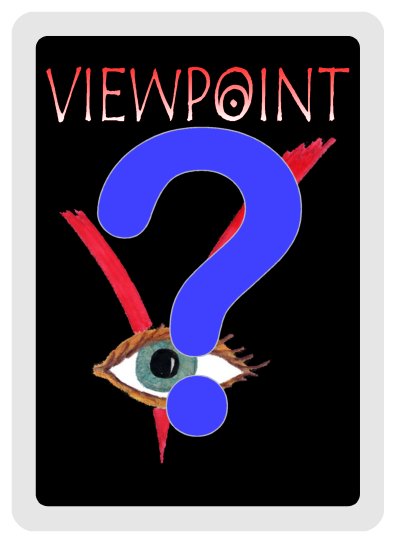
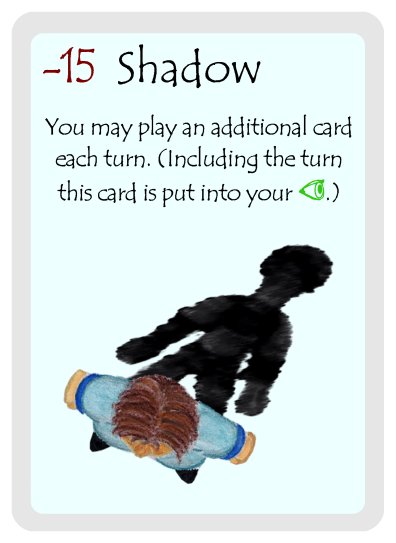
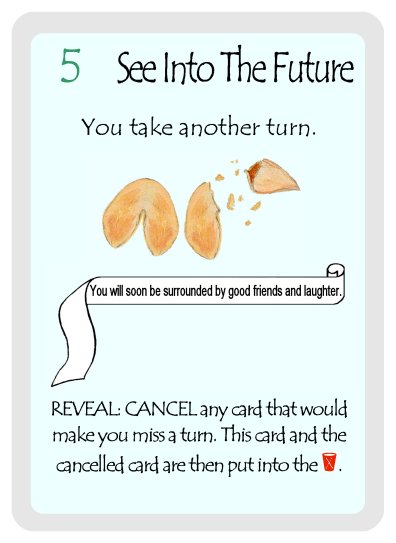
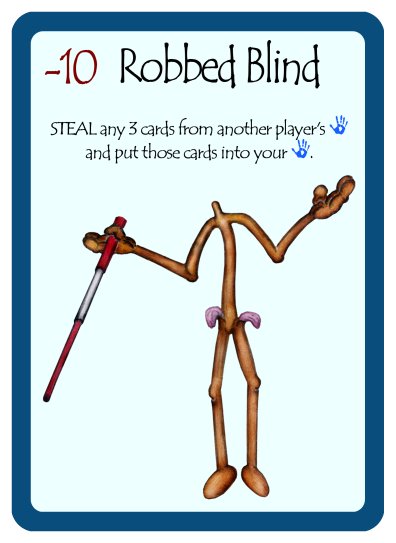
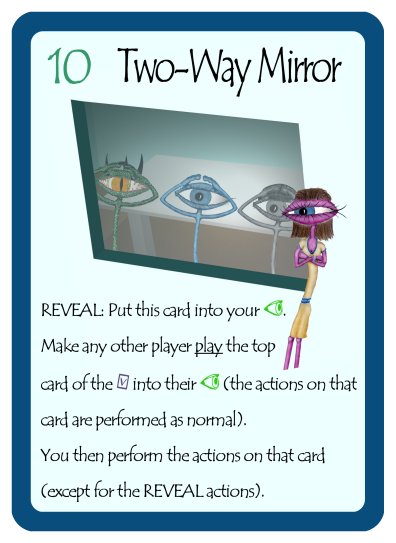
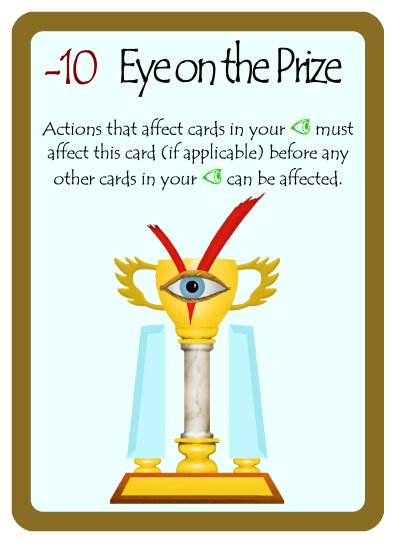
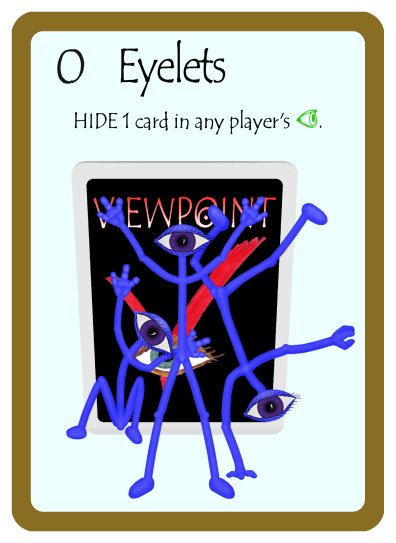
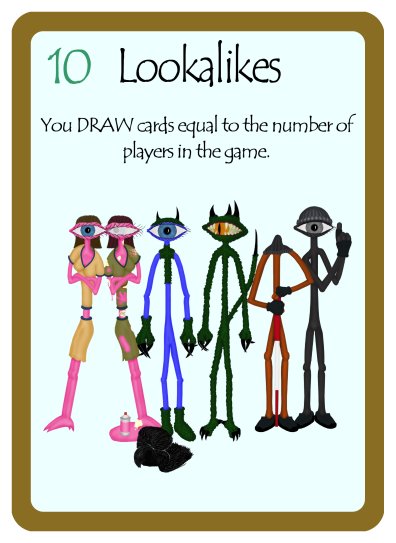
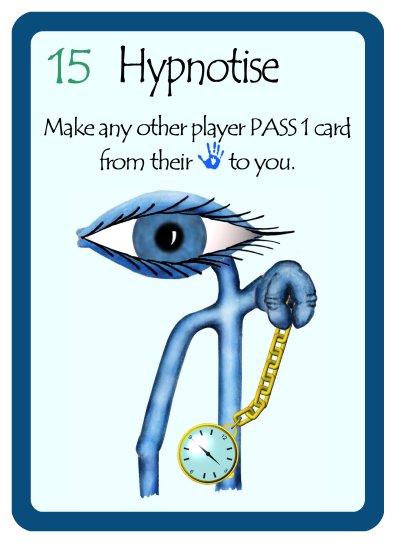

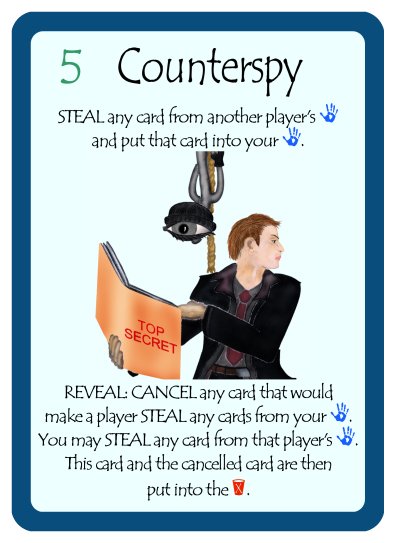
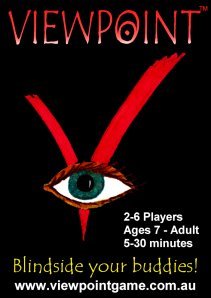
 RSS Feed
RSS Feed